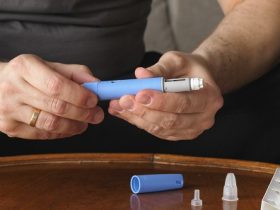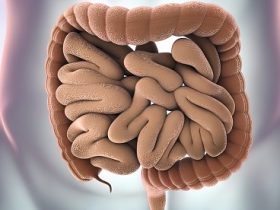Parkinson’s Disease (PD) is a progressive disorder affecting the nerve cells in the brain that are responsible for body movement. It is the second-most prevalent neurodegenerative disease, affecting nearly one million people in the U.S.
At the recent Pri-med East conference held in Boston, Daniel Press, MD, Chief Cognitive Neurology Unit, Beth Israel Deaconess Medical Center, Associate Professor in Neurology, Harvard Medical School, gave an informative talk reviewing the diagnosis and therapies available for PD and how can be differentiated from essential tremor.
The objective of the talk was 1) to review the signs of Parkinsonian tremor and how to identify/diagnose Parkinson’s disease, 2) to discuss essential tremor and how it can be distinguished from Parkinson’s disease, and 3) to depict new therapies for essential tremor beyond medications.
Parkinsonism occurs due to motor symptoms associated with impairment in basal ganglia circuits and can be classified as primary, parkinsonism plus, and secondary parkinsonism. The three hallmark symptoms of Parkinson’s Disease (PD) are:
- Rigidity (the constant resistance to passive motion).
- Bradykinesia (the progressive slowness of movements).
- Tremor (both resting and action).
Parkinson’s disease is also associated with motor symptoms (like freezing, stooped posture, and shuffling gait) and non-motor symptoms (like depression, anosmia, autonomic symptoms such as constipation and orthostatic hypotension, and rapid eye movement (REM) behavior disorder). Constipation symptom in PD is found in about 40-50% of patients, and it often anticipated motor symptoms for 5-15 years. It is characterized by the accumulation of synuclein in the gastrointestinal tract.
Exams and history are sufficient in classic cases of PD. In the case of atypical PD, a head MRI is recommended. For early-onset or familial PD, genetic testing is recommended. DaTscan procedure distinguishes PD from essential tremor (ET), drug-induced parkinsonism, and controls.
Essential tremors may be physiological tremors, usually brief and only obvious under stress. These may occur due to metabolic disorders (such as hyperthyroidism and hypercalcemia). ET may also be drug-induced (induced by valproic acid, lithium, SSRIs, amiodarone, beta-agonists, and steroids).
Clinical features of PD tremors vary from ET and differentiating them is crucial for correct diagnosis. The tremor asymmetry is marked in PD and occurs in rest and action states, whereas in ET, tremors are minor, appearing only in the action state. As highlighted above, associated motor and non-motor features in PD are not seen in the case of ET. In contrast to PD tremors, ET shows improvement with alcohol.
Medical treatment of ET should be initiated depending on the degree of disability. If intermittent issues occur (e.g., writing checks), short-acting propranolol (10 mg) should be prescribed. If a persistent disability is observed, propranolol XR or primidone should be prescribed. Second-line therapeutic agents for ET include atenolol (if propranolol is not tolerated), gabapentin, and topiramate. Deep brain surgery and focused ultrasound comprise the third line of treatment.
Tremors can run the gamut from very benign (physiological tremors) to indicators of Parkinson’s Disease. Carefully analyzing the history and proper physical exam can help to differentiate between the different causes of tremors. Some tremors respond well to medications, but others pose challenges to treatment. The advent of new surgical and non-surgical therapies offers the potential to reduce certain tremors dramatically.







